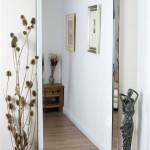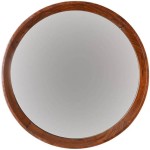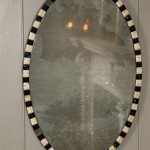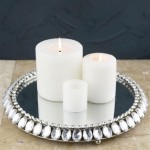Why Are Mirrors So Expensive?
Mirrors, seemingly simple objects reflecting our image back to us, can carry surprisingly hefty price tags. The cost of a mirror isn't solely determined by its size. A complex interplay of factors, from raw material costs and manufacturing processes to the type of glass and additional features, contribute to the final expense.
The foundation of any mirror is the glass itself. While standard glass can be used, higher-quality mirrors often employ specialized glass types like float glass or even low-iron glass. Float glass, created by floating molten glass on a bed of molten tin, offers excellent flatness and uniformity, crucial for distortion-free reflections. Low-iron glass, with its reduced iron oxide content, eliminates the greenish tinge inherent in standard glass, resulting in truer color representation, particularly important for decorative and artistic applications. These specialized glass types come at a premium compared to standard glass, impacting the overall mirror cost.
Transforming a sheet of glass into a mirror involves a meticulous process of applying a reflective coating. Traditionally, this coating consisted of silvering, a chemical process depositing a thin layer of silver onto the glass. Silvering, while effective, is susceptible to environmental degradation, tarnishing over time. Modern mirrors often utilize aluminum or other metallic coatings, applied through vacuum deposition. This process involves vaporizing the metal in a vacuum chamber and allowing it to condense onto the glass surface, forming an even, durable, and tarnish-resistant reflective layer. The complexity and precision of these coating processes contribute significantly to the final cost of a mirror.
Beyond the glass and reflective coating, the backing plays a crucial role in a mirror's longevity and performance. The backing protects the delicate reflective coating from damage and environmental factors like moisture, which can lead to corrosion. Traditional backings often used a layer of shellac or paint. However, modern mirrors often employ specialized protective backings composed of multiple layers of protective polymers or even copper, providing superior resistance to moisture, scratching, and other forms of damage. These advanced backings, while contributing to the mirror's durability, also add to the overall production cost.
The size and shape of a mirror also influence its price. Larger mirrors require larger sheets of glass and more reflective coating material, directly increasing the material costs. Intricately shaped mirrors, such as those with beveled edges or custom designs, necessitate additional processing steps, including cutting, grinding, and polishing, further adding to the labor and overall expense. These specialized processes require skilled craftsmanship and specialized equipment, impacting the final cost of the mirror.
Framing and mounting options contribute significantly to a mirror's price. Frames can range from simple, inexpensive materials like plastic or aluminum to elaborate, handcrafted designs using high-quality wood or even precious metals. The type of frame chosen significantly impacts the overall aesthetic and cost of the mirror. Similarly, mounting hardware, whether for wall-mounting or incorporating the mirror into furniture, can range from simple clips and brackets to complex, custom-designed mounting systems. These framing and mounting choices can significantly influence the final price of a mirror.
Transporting large, fragile mirrors presents logistical challenges. Specialized packaging and handling are required to prevent breakage during shipping. The cost of these specialized crating and shipping procedures factors into the final price, particularly for oversized or custom-shaped mirrors. The distance between the manufacturing facility and the final destination also plays a role in transportation costs.
Finally, the retail markup contributes to the final price consumers pay. Retailers factor in overhead costs such as rent, utilities, and staff salaries when setting prices. Marketing and advertising expenses also play a role in the final pricing structure. The specific retailer and their pricing policies can influence the ultimate cost of a mirror.
In conclusion, the seemingly simple mirror is a complex product influenced by numerous factors. Material costs, manufacturing processes, size, shape, framing, mounting, transportation, and retail markup all contribute to the final price. Understanding these factors provides insight into why mirrors can be surprisingly expensive, reflecting not only our image but also the intricate processes and materials involved in their creation.

Mirror Based Economy Tales Of The Aggronaut

Mirror Based Economy Tales Of The Aggronaut

Poe Mirrors Of Kalandra For Buy Mirror Boosthive

The Best And Most Expensive Path Of Exile Items
Path Of Exile Guide How To Get The Mirror Kalandra

Poe 3 23 I Spent 7 Mirrors Crafting An Abyss Jewel So You Don T Have To

Most Expensive Trade Ever On Stream 46 Mirrors Poe Ultimatum Highlights

The Best And Most Expensive Path Of Exile Items

Buy Poe Mirror Of Kalandra Path Exile Boosting And

Poe 3 22 Double Mirror Reward Carry Not Again A Sd With Larry








